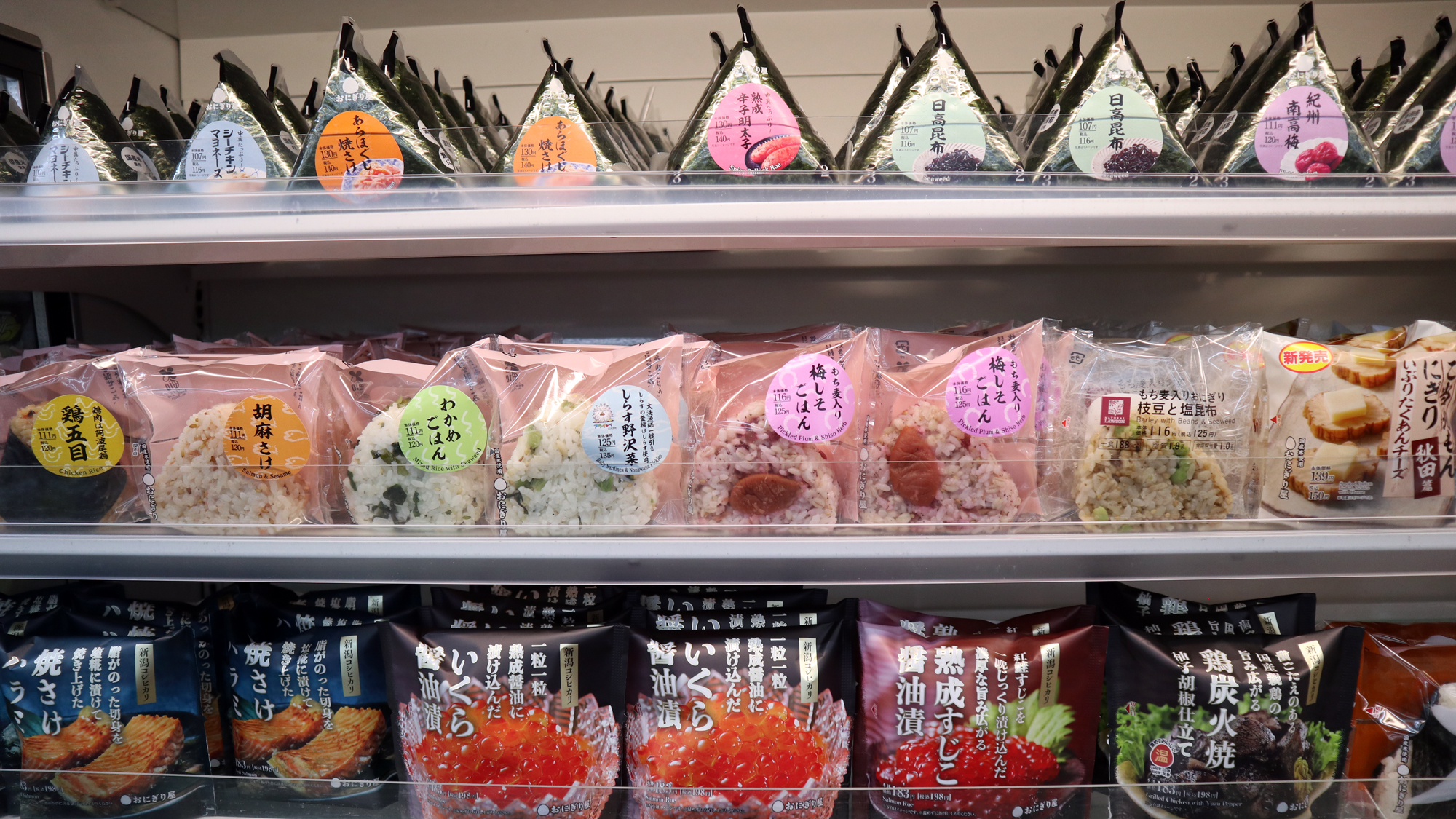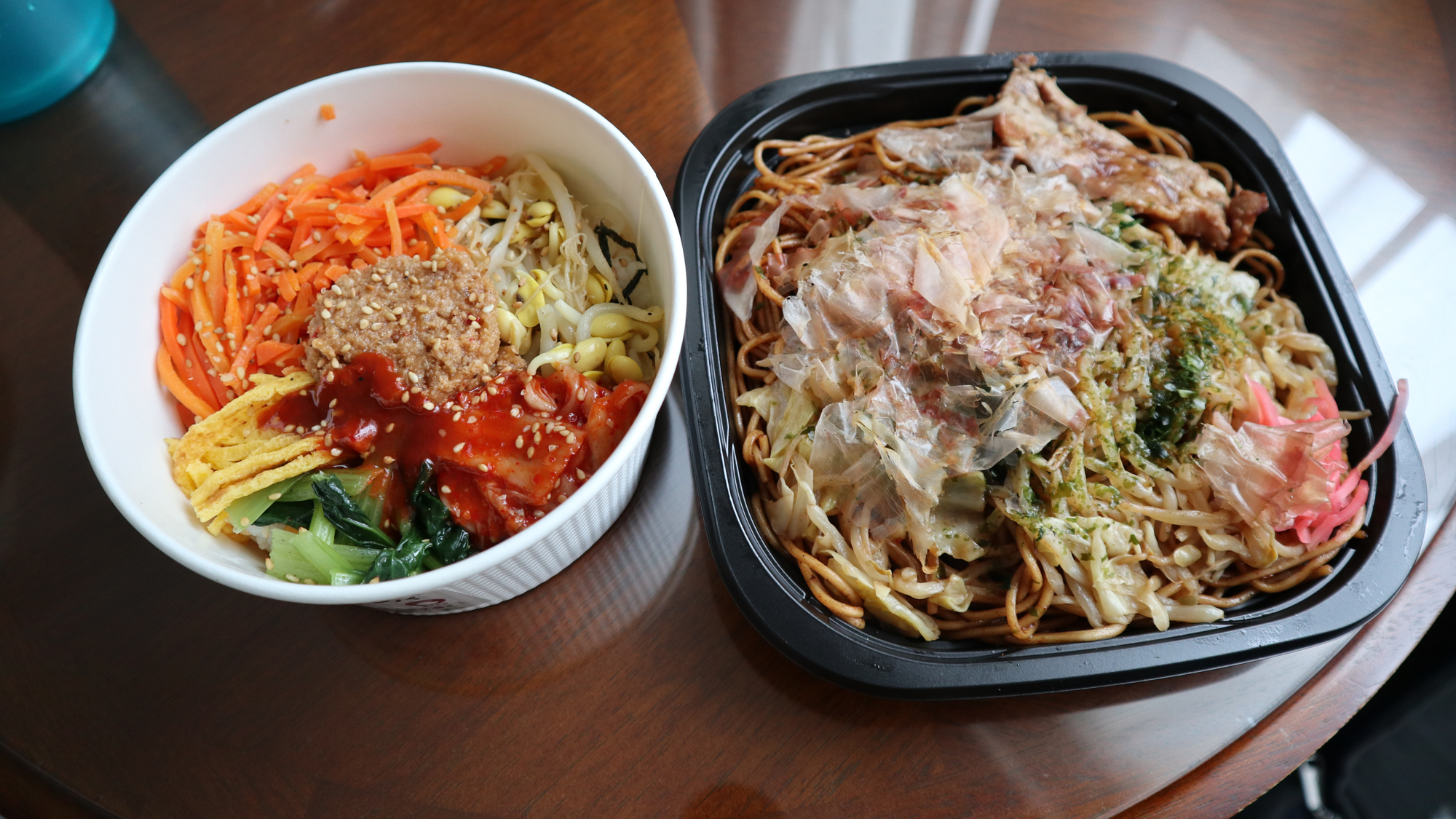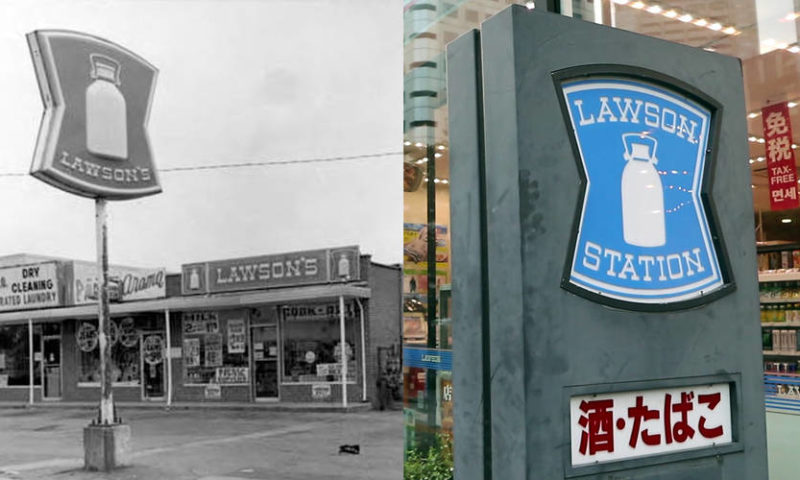Japan and the United States have a long history of not only economic competition, but also cultural exchange. In the U.S., for instance, sushi and anime are popular. And the Japanese long ago adopted baseball and jazz. If that’s old news to you, here’s one America-to-Japan export that might surprise you: U.S. convenience stores.
This story is about one of those stores: an iconic Ohio chain that went extinct there decades ago, only to become one of the most ubiquitous convenience store brands in Japan.
It was 1939, and J.J. Lawson, the owner of a dairy plant in Cuyahoga Falls, Ohio, had an idea: rather than having his milk delivered to people’s houses, why not open a store and let people come to him? That was the birth of Lawson’s Milk Company. Later, he added other staples like eggs, deli meats, and orange juice. And pretty soon, Lawson’s became an early example of what we think of today as a convenience store.
Mention the name “Lawson’s” to Ohioans of a certain age, and you’re likely to get a nostalgic grin. Chances are, they’ll even start singing a jingle from an old Lawson’s commercial advertising Lawson’s brand orange juice: “Roll on, Big O.”
“I love that song!” said Roger Lumpkin, a videographer from Cleveland, who said he was about five-years-old when his father, Hezekiah, opened a Lawson’s franchise in East Cleveland.

“I remember my dad wrapping an apron around me, and me putting up the bottled milk jugs,” he said. “The jugs were almost as big as I was!”
Lumpkin, 55, worked at the store until he went to college in the 1980s. By that time, the chain had grown to around 700 locations.
But by 1985 the company’s owner at the time, Sara Lee Corp. (previously known as Consolidated Foods Corp.), sold the Lawson’s stores to Dairy Mart. (After declaring bankruptcy in 2001, Dairy Mart would sell its stores to a Canadian company, Alimentation Couche-Tard Inc., which converted many of them to Circle K stores).
“I pretty much thought that was the end of Lawson’s,” Lumpkin said.
Except it wasn’t. The Lawson named still lived on in Japan where, in 1975, the company partnered with a Japanese retailer, Daiei, to open a franchise in Toyonaka City. While Daiei was already a major player in Japan’s supermarket business, the concept of a “convenience store”— something more than a ma and pa corner shop, but smaller than a full-blown grocery, was still new to the country. (Another U.S. import, 7-Eleven, made its Japanese debut a year earlier). Japan, with its densely packed cities and increasing taste for modernization, was an ideal environment for the convenience store model. Lawson’s took off.

Today, Lawson has over 14,000 stores in Japan. It’s the number three convenience store brand after 7-Eleven (~21,000 stores), and a homegrown rival called FamilyMart (~17,000 stores). For perspective, there are only around 10,000 7-Elevens in the United States and Canada combined.
But the Japanese didn’t just embrace the convenience store. They made it their own.
The food selection, for instance, goes way beyond what you’d find at your typical American gas-and-go, said Michael Jacobs, a retail analyst at T. Rowe Price based in Tokyo. That’s because, in Japan, convenience stores (or “c-stores” as he calls them) compete with restaurants and fast-food joints, he said.
At a typical c-store in Japan, you’ll find shelves stocked with rows of freshly made noodles, bento boxes, salads, meat dishes, baked goods, and a dozen varieties of onigiri, or rice balls, which are “probably the single best-selling item at a Japanese convenience store,” according to Jacobs.
In a way, he said, the rice ball is to Japanese convenience stores as the hot dog is to U.S. convenience stores (except that rice balls usually haven’t spent who-knows-how-long sweating in one of those rolling heat chambers).
“Japanese convenience stores have the most sophisticated distribution system,” he said, with an average store receiving a food delivery every eight hours.

Some American brands are starting to take cues from their Japanese counterparts, Jacobs said, offering fresher food with more variety. But “that doesn’t mean they’re selling rice balls,” he said.
It’s not just the food (or geography) that makes Japanese convenience stores different from those in the U.S. Walk into just about any Lawson, for instance, and you can order tickets for movies or flights, make photocopies, buy auto insurance, pick up packages that you ordered online, and pay your taxes and utility bills. Also, there’s almost always a public toilet, and you’re not required to buy anything if all you want is to use the restroom.
“You don’t even need to get a key,” Jacobs said.
Jacobs says Lawson is a prime example of how foreign brands can adapt to local tastes. For example, in Japan, it’s known as Lawson, while Ohioans called it “Lawson’s” with an “s.”

Still, some things are the same. The company colors are blue and white, and the logo is a still an old-timey milk can.
Outside a Lawson in Tokyo’s Yushima neighborhood, Sawa Hino, 25, said she goes to Lawson almost every day for lunch, and had always thought it originated in Japan.
When she was told that the brand actually began almost 80 years ago as a small dairy store in Ohio, her eyes grew wide.
“Ah, that’s why they have a milk bottle on the logo!” she said.
Although she goes to Lawson frequently, she said she isn’t particularly brand loyal.
But Roger Lumpkin, who grew up with Lawson’s in Cleveland, is still nostalgic for the brand.
“I miss the corner store,” Lumpkin said. “It was so much a part of our community growing up as a kid, and I hope the Japanese find some element of that as well.” Currently, the company has stores in China, Thailand, the Philippines, as well as two stores in Hawaii, which it established in 2012.
While it’s unclear if Lawson’s will ever return to Ohio, Lumpkin said, it’s just cool to see the brand “roll on.”

